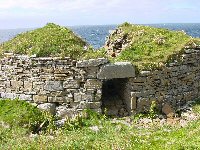
Figure 4: Remains of the Broch of Borwick, Mainland, Orkney
Within this environment, during the period roughly spanning 600 BC to AD 400, a new group of monumental structures began to appear. Monumentality in Orcadian architecture was not new: the cairns and standing stones left by Neolithic society were, and still are, highly visible components of the landscape. For the first time in Orcadian society, however, monumental construction was being directed towards structures intended for daily use and habitation. These are the structures traditionally known as brochs (Fig. 4).

Figure 4: Remains of the Broch of Borwick, Mainland, Orkney
The exact architectural features that characterise these monumental structures are still the subject of ongoing debate (Armit 1990 and 1997a; MacKie 2002; Sharples and Parker Pearson 1997), but a very broad characterisation can be made. These structures were constructed using drystone masonry techniques, with little or no revetting into the ground relative to the height of the walls. Wall thickness was dramatically increased over that of earlier structures, and in at least a handful of examples great height relative to both earlier and later drystone structures was achieved. The overall shape of the structures changed from a lobate, cellular form, to a form dominated by the thick, near-circular wall. These monumental structures would have dominated the Iron Age landscape of Orkney by their sheer density: potentially as many as one per 5km square. This high density (Fig. 5) also implies they were most likely the majority architectural form present in Orkney, although the presence of subsurface features such as souterrains (underground storage chambers) unconnected with any known brochs indicates there may also have been other Iron Age domestic architecture present in Orkney during this period (M. Carruthers, pers. comm.).
The interpretation of these structures is also still a matter of conjecture. Initially, brochs were considered to be fortresses, either for the use of elites or as a refuge for a local farming population (Anderson 1883). These arguments, and particularly the elite role in constructing brochs, persists to this day in the work of MacKie (MacKie 1994, 101, and 2000, 104). A function more recently suggested for brochs was that of a visible symbol of status, used in the arena of social competition. Barrett seems to have been the first to propose this function (Barrett 1981), but the idea was rapidly taken up by numerous authors (Armit 1997b; Fairhurst 1984; Foster 1989a; 1989b; Sharples and Parker Pearson 1997). In the context of a tradition of monumental house building, the broch becomes a physical statement of the power of the local group to acquire and mobilise both the materials and the labour to construct the broch (Barrett 1981, 215).
However, neither of these interpretations is completely satisfactory. The fortress interpretation ignores various architectural features of the brochs that would make an active defence of the 'fort' close to impossible (Hingley 1992, 19; Mercer 1985, 19; Sharples 1998, 207), while the interpretation of brochs as a status symbol has tended to over-emphasise this role at the expense of the use of these structures for day-to-day shelter and living activities.
© Internet Archaeology/Author(s)
University of York legal statements | Terms and Conditions
| File last updated: Tue Dec 20 2005